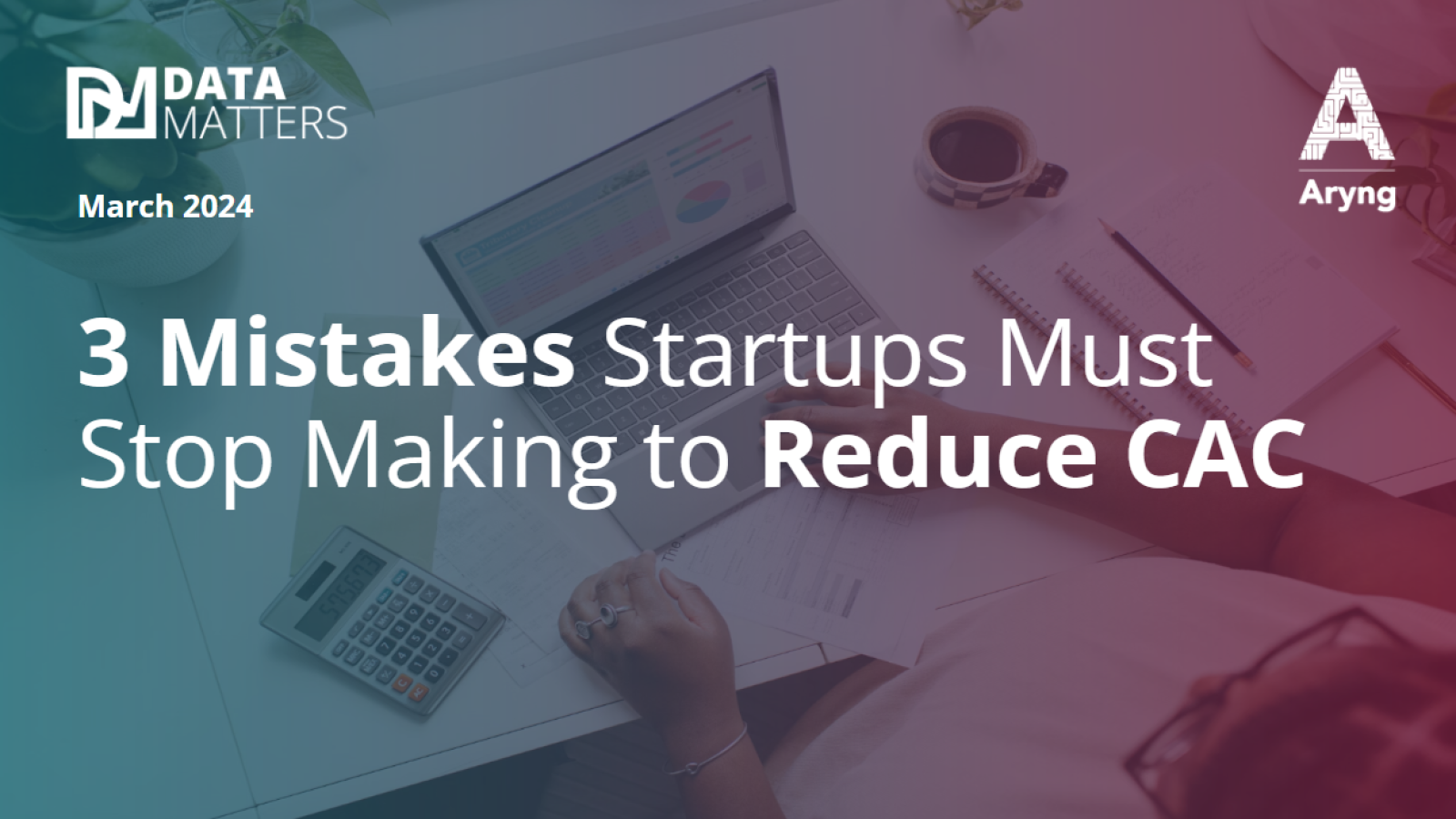The landscape for startups has dramatically shifted. With each penny holding more weight and the flow of venture capital not as generous as before, it’s become critical for startups to refine and perfect their Customer Acquisition Cost (CAC). This means getting smart about your Customer Acquisition Cost (CAC), which isn’t just nice to reduce – it’s make or break.
The 3 Mistakes to Avoid to Reduce CAC
There’s a lot of chatter about trimming down CAC, but often it misses the mark, sending startups down a path where they’re accidentally ramping up costs instead. So, let’s dive into three big no-nos to avoid and get your CAC game on point.
Stop making excuses for your data
It’s time startups got real about their data, especially when it comes to the tricky parts like brand campaigns or fresh marketing channels. Often, there’s this habit of brushing aside the hard-to-measure aspects of Customer Acquisition Cost (CAC). Think of it like avoiding tough conversations – it doesn’t make the challenges go away.
Let’s talk about getting creative with data. In our AI-powered world, saying something is too complex to measure doesn’t really cut it anymore. AI has this knack for diving into the deep end of qualitative data, pulling out insights on things we used to think were too fuzzy to grasp – like how people feel about a brand. But here’s a kicker: not many companies are fully on board yet with using AI this way in their marketing analysis, even though it’s a game-changer.
Take predictive AI models, for example. They’re like the compass for navigating through shifting marketing trends, something that’s super handy for startups running on tight resources. These models can be a lifeline in understanding what’s working and what’s not in your marketing spend.
In short, it’s about facing the data head-on, no matter how daunting it might seem. When you start measuring even the tough stuff, you’re setting up your startup for smarter spending and, ultimately, more solid growth. If you want to reduce CAC, let’s not just play it safe with data – let’s play it smart.
Stop ignoring parts of the cost
Here’s a heads-up for startups: when you’re trying to reduce CAC, you’ve got to count it all. It’s easy to just tally up the direct channel costs and call it a day. But what about the other stuff – the team behind the scenes, the tech, and all those bits and pieces that don’t scream ‘direct cost’? Sure, they’re a pain to measure, often scattered across different departments or lost in a maze of systems. And, let’s be honest, sometimes leaving them out makes the CAC look a bit less scary.
But here’s the catch. Ignoring these costs can backfire big time. Picture this: a startup focuses only on direct channel costs to reduce CAC. They cut back on marketing spends, but oops – now they need more people to push up those dipping revenues. And as they keep cutting costs on one front, the spending on personnel goes up. Before you know it, they’re actually bleeding money, even though the CAC sheet looks pretty.
On the flip side, imagine if they had taken into account every little expense from the get-go. Yes, the CAC might look higher initially, and gathering all that data is no walk in the park. But this way, they get the full picture. They see where the money’s really going, and that’s gold. It means smarter resource allocation, actual cost-saving, and in the long run, a healthier, more sustainable CAC. So, the bottom line? Count everything. It pays off.
Stop looking at CAC in isolation
For startups, seeing a high Customer Acquisition Cost (CAC) – like a grand or so – can be a bit of a shocker. The instinct? Chop it down. But here’s a twist: CAC shouldn’t be flying solo in your analysis. It’s really about how it stacks up against the Lifetime Value (LTV) of your customers. Think of LTV:CAC ratio and payback period as a tag team. Say your CAC is $1000, but if a customer is shelling out $700 annually for five years, that CAC isn’t looking so bad now, is it?
However, many startups in their quest to reduce CAC end up inadvertently hurting customer experience. This can knock down the LTV and, ironically, end up pushing CAC higher as they scramble to ramp up marketing.
So, the game plan? Stop chasing CAC in a vacuum. It’s about seeing the bigger picture. That means no more brushing aside the less obvious costs like your team’s efforts or tech tools, which can skew your CAC figures. Get real with the data, and maybe let AI give you a hand in untangling the complex bits. Balancing CAC with LTV gives you a clearer picture of where you stand and how to steer your resources. This way, you’re not just trying to reduce CAC but nurturing customer relationships too, setting your startup on a path for sustainable growth and smarter spending.


Add a Comment